Apple's Fastest Pizza Box - Macintosh LC 475
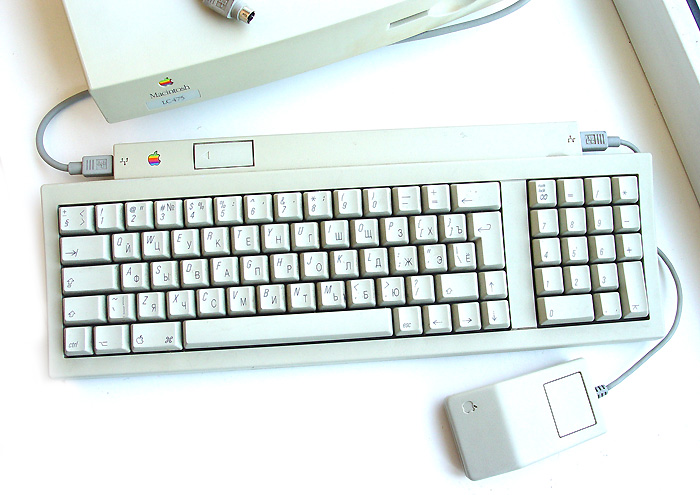
Macintosh LC (meaning “color and cheap.”) This Apple Computer product was perhaps the most popular and sought after personal computer in the Macintosh family in the early 90s. Originally Macintosh LC was released in 1990 and became the first affordable and at the same time color "Mac". Due to the not high price and the fact that it worked without problems software written for Apple II, Macintosh LC has become very much in demand as a home computer. He was also very popular in medical and educational institutions.
In fact, it has become a new and very important step in the transition from the losing popularity of the 68k platform and the establishment of the PowerPC platform, which later became very popular and was used in many Apple computers.
Story
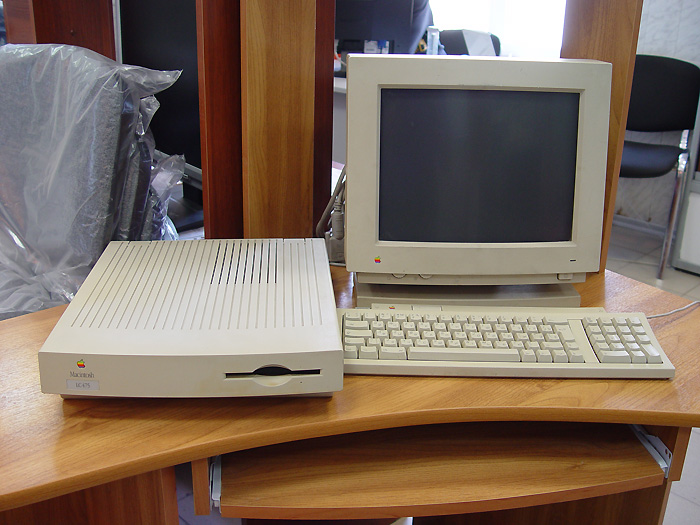
Macintosh computers, and especially colored Macs, starting with Macintosh II released in 1987, have always been quite expensive computers. This severely restricted the market for their distribution, since they were not accessible to most users. The LC series was a kind of breakthrough for a new, for Apple market, “home computers”. Engineers from Cupertino have tried hard to make a computer with excellent functionality, relatively cheap and very affordable. And after 4 months of sales, it became obvious that the long 2 years and nine months spent on the development of this model will pay off very quickly.
In order to hold out longer on the wave of LC success, the LC II was released in 1991, in which a new processor was installed - instead of the LC 68020, the more powerful 68030 was used. The LC II sold even better than the parent model and this success spawned a whole LC range. The Macintosh LC 580 is the latest computer on the Motorola 68k processor. Later PowerPC was used, and a little later Apple began to work closely with Intel.
')
An interesting fact is that before the appearance of the LC 475 model, or as it was called Perfoma 475, Apple computers (and even a few competitors at the time) were sold only through dealer networks. But the 475th became so popular that it began to sell well even with large stores of home appliances and electronics. This is perhaps one of the first instances of the mass awareness that a computer can be truly personal.
Later, Apple changed the processor and platform to PowerPC, but the new models continued to call LC, only a few extended the name - “Power Macintosh LC XXXX” (and, “Performance XXXX”). The LC line was developed until 1998, in which Apple released the iMac.
Iron
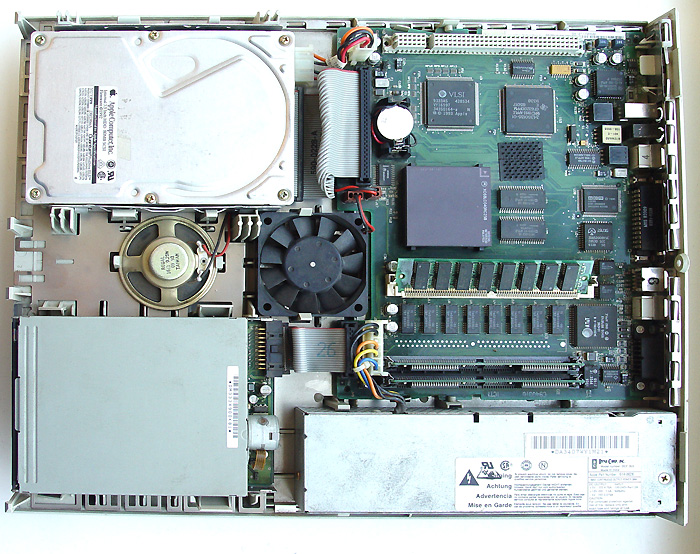
Initially, there were no expansion slots in the LC series of computers, the processor frequency (68020) was only 16 MHz and it worked on a 16-bit data bus (this was one of the main bottlenecks, since 68020 was a 32-bit CPU). The amount of RAM used was limited - only 10 MB. The video system had its own memory (VRAM) and it was only 256Kb, which allowed displaying a picture with a resolution of 512x384 pixels in 8-bit color, although for 12 “RGB monitor it was very good.
If desired, any user could “upgrade” their LC and increase VRAM to 512 KB, which would significantly improve video capabilities. With this amount of video memory, you could get an image of 512x384 pixels in 16-bit color or 640x480 pixels in 8-bit color. But such an improvement was not very popular, since “pizza boxes” were usually bought with a 12 ”Apple monitor, the supported resolution of which was fixed - 512x384 pixels, so this upgrade had almost no sense.
“Almost” by the fact that the user could use a non-Apple monitor with a resolution of 640x480 or 832x624 pixels with a 256-color display gamut, and the maximum supported resolution was 1152x870 but in the case the user received only 16 colors.
With the release of the LC-475, it became possible to deliver up to 1 MB of VRAM to get 64k colors at a resolution of 832x624 or 1152x870, but 256 colors or shades of gray.
Macs almost never complained about their owners with the standard connectors for connecting monitors. And if you wanted to use a monitor from another manufacturer with an EGA or D-Sub (VGA) connector, then you would have to buy another adapter with customizable parameters:

LC had several other not less distressing features. For example, many programs that were written for other Macs believed that the minimum screen size was 640x480 pixels and simply simply refused to work on 512x384. This annoying nuisance for several years did not give rest to the developers and the Apple technical support service, since the promotional materials and many presentations stated that the software was fully compatible with older "industrial" computers.
Overall, the overall performance of the first LCs was disappointing to many. Basically, because of the narrow bus, since the processor itself could produce significantly better results, but because of the 16-bit bus, all its speed and power was simply useless. The same 16 MHz 68020 that ran on Macintosh II worked twice as fast as on the Macintosh LC. Such a performance loss was also due to the fact that Mac LC, unlike Mac II, did not have a computer memory management unit (MMU) and therefore could not work well with virtual memory.
In the LC II model, where the new 68030 processor was already used in which the MMU was integrated, this problem was no longer there. But even more joy for the lovers of powerful computer systems was the appearance of the 32-bit bus, which appeared on the LC III model in 1991.
But, by the middle of 1991, Apple's budget computers found it rather difficult to compete with PCs based on 80386 40 MHz processors that became popular, and it was harder for them to move into the market with the release of the 486th. In order to keep growth in the sales and popularity of its solutions, Apple launches the LC 475 with a 68LC040 processor, which, although running at 25 MHz, could successfully compete with the 386th task speed. A little later, the top models Performa 475 and Performa 476 appeared, which already worked at 50 MHz.
Our museum thinkit.ru LC-475 is just with a 25MHz processor, as evidenced by the last numbers in its name.

The floppy disk drive and SCSI-vintchester were used as storage media in this line of Apple computers.
Moreover, if in Macintosh LC there was an opportunity to use only one hard disk, then in older models it was possible to replace FDD with HDD.
The installed SCSI controller made it possible to read from the screw-reader at speeds up to 1347 Kbytes / s, and it could write 1200 Kbytes / s. Although such speeds almost never could be achieved due to the limitations of the screw testers themselves. The standard speeds for the most common 40 and 80 megabyte models were 919 KB / s for reading and 862 KB / s for writing.
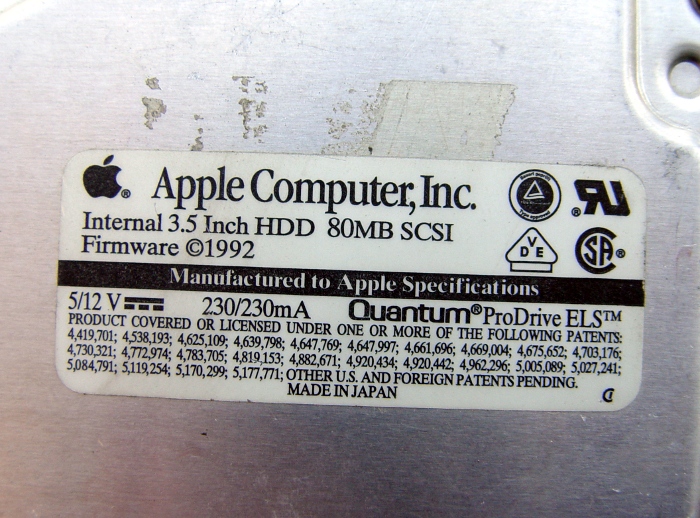
In Macintosh LC, standard SCSI-2 discs were used. It was possible to use disks of any manufacturers (in our case it is Quantum). The only limitation that, however, was managed with the help of “patching”, is the impossibility to use partitions of more than 2 gigabytes.
operating system

The choice of the ideal OS for Macintosh LC lies between two extremes: with MacOS 7.5.5 you get a more or less stable operating system with the ability to work in the Internet, and if you do not need this opportunity, then you can choose MacOS 7.5, which will save you a lot on vinchester and occupied memory. And the lucky owners of Macintosh LC 475 with a top-end Motorola 68LC040 processor were able to use MacOS 8.1 after its official release.

Conclusion
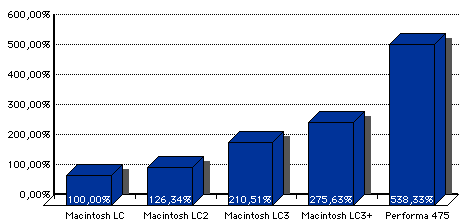
The main desire and purpose of the release of this line of computers for Apple was to get a claimed device that would be sold in large quantities and brought a good profit. Having done a great job, they managed to get an excellent price / quality ratio and still achieve even greater popularity among fans of excellent electronics. Despite the fact that the price of Macintosh LC was very low and many skeptics talked about the unprofitability of this project, by the end of 1990 Apple managed to increase its profit by 85%.
UPD. Thanks Amon_Sha for correcting grammatical errors :)
Source: https://habr.com/ru/post/60821/
All Articles